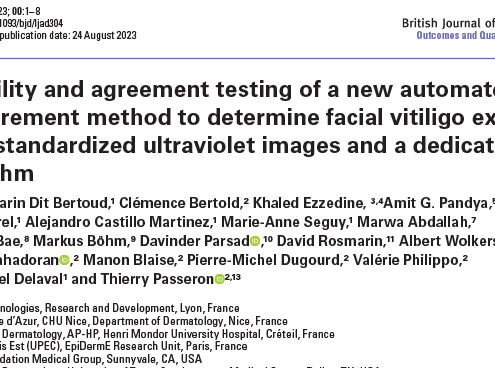
Reliability and agreement testing of a new automated measurement method to determine facial vitiligo extent using standardized ultraviolet images and a dedicated algorithm
Dermatologie, Dermatology, PigmentationFacial repigmentation is the primary outcome measure for most vitiligo trials. The Facial Vitiligo Area Scoring Index (F-VASI) score is often chosen as the primary outcome measure to assess the efficacy of treatments for facial vitiligo.
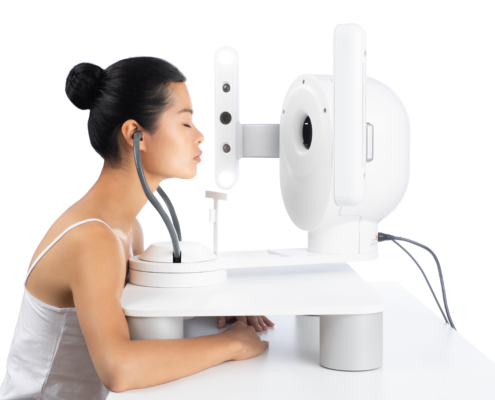 https://qima-lifesciences.com/wp-content/uploads/2022/07/Newtone-ColorFace-shooting-2r2-scaled.jpg
1707
2560
Vanessa
https://qima-lifesciences.com/wp-content/uploads/2023/03/QIMA_life_sciences.png
Vanessa2023-04-28 08:55:272025-03-12 14:08:38Face imaging system – ColorFace
https://qima-lifesciences.com/wp-content/uploads/2022/07/Newtone-ColorFace-shooting-2r2-scaled.jpg
1707
2560
Vanessa
https://qima-lifesciences.com/wp-content/uploads/2023/03/QIMA_life_sciences.png
Vanessa2023-04-28 08:55:272025-03-12 14:08:38Face imaging system – ColorFace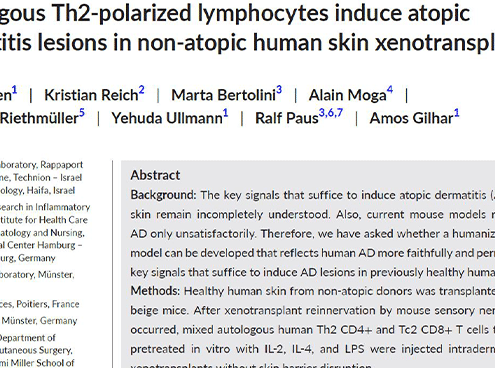
Autologous Th2-polarized lymphocytes induce atopic dermatitis lesions in non-atopic human skin xenotransplants
Atopic dermatitis, PharmacologyAtopic dermatitis (AD) is one of the most common, as yet incurable chronic inflammatory skin diseases, which occurs in distinct endotypes and shows increasing prevalence.
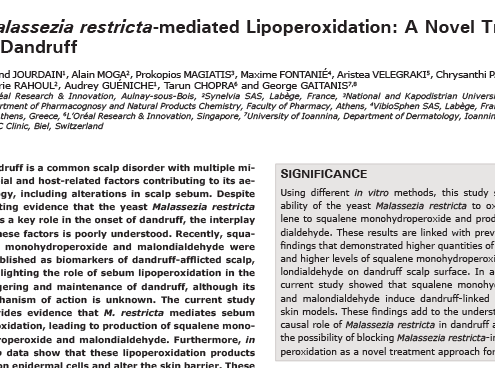
Malassezia restricta-mediated Lipoperoxidation: A Novel Trigger in Dandruff
Dermatologie, Dermatology, Hair follicleDandruff is a common scalp disorder with multiple microbial and host-related factors contributing to its aetiology, including alterations in scalp sebum.
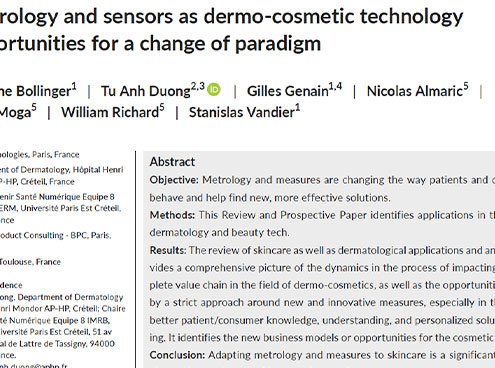
Metrology and sensors as dermo-cosmetic technology opportunities for a change of paradigm
Cosmetics_cat_publi, DermatologyAccording to the International Bureau of Weights and Measurements, metrology, the study of measurement, is becoming an essential aspect of all industries today in creating value.
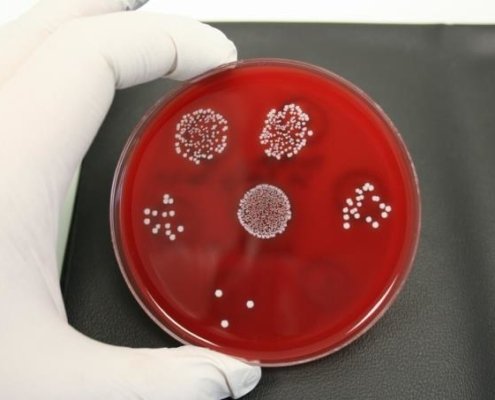
Microbiota vs. Microbiome: What’s the Difference?
Skin microbiomeWhat is the difference between microbiota vs. microbiome? Why are they important to human skin? What is the Skin Microbiota test? Learn more here.

Using Reconstructed Human Epidermis model in Skin Microbiome Research
Skin microbiome, Skin microbiomeSkin microbiome research is developing rapidly. Are you up to date? Find out why 3D skin models are an important development in skin microbiome research.
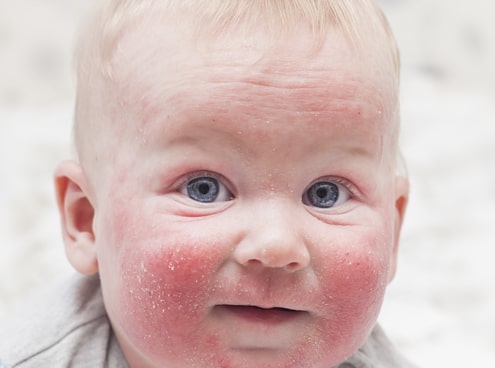
Atopic dermatitis
Atopic dermatitisAD is the most common dermatosis affecting children: 65% of the patients are less than a year old and 85% are below 5 years. The prevalence of this pathology is constantly on the rise and currently affects 10 to
25% of the population.
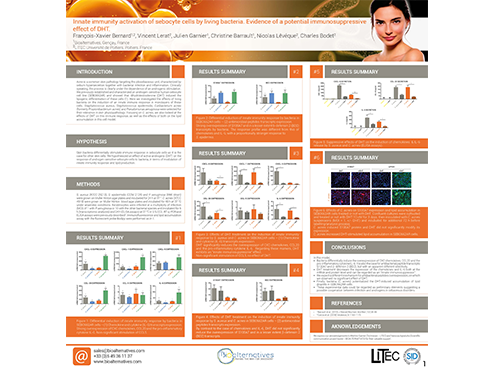
Innate immunity activation of sebocyte cells by living bacteria. Evidence of a potential immunosuppressive effect of DHT.
Acne, Microbiome cutané, Sebaceous gland regulation, Skin microbiome, Skin microbiomeAcne is a skin pathology targeting the pilosebaceous unit…sebum hypersecretion and bacterial infection. We studied the effects of living bacteria on the induction of an innate immune response in a sebocyte cell line.
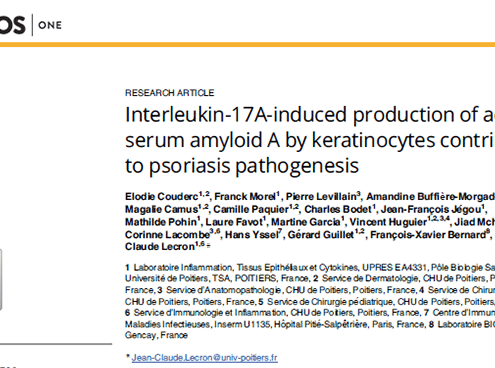
Interleukin-17A-induced production of acute serum amyloid A by keratinocytes contributes to psoriasis pathogenesis
PsoriasisAcute-serum Amyloid A (A-SAA), one of the major acute-phase proteins, is mainly produced in the liver but extra-hepatic synthesis involving the skin has been reported. Its expression is regulated by the transcription factors NF-κB, C/EBPβ, STAT3 activated by proinflammatory cytokines.
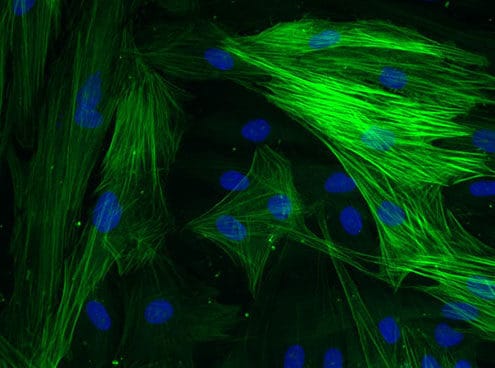
Wound healing, granulation phase and maturation phase
Wound healingThe third phase of wound healing, consisting in the replacement of the provisional
fibrin matrix with granulation tissue once the wound has been debrided, includes several sub-phases: re-epithelialization, fibroplasia, collagen deposition and angiogenesis.
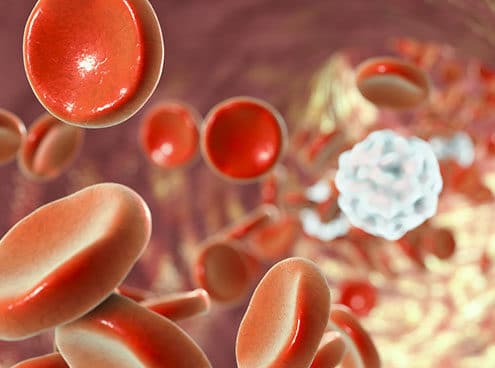
Wound healing, hemostasis phase and inflammatory phase
Wound healingThe inflammatory phase is characterized by the sequential infiltration of polymorphonuclear neutrophils (PMNs), monocytes/macrophages and lymphocytes. IL-8 facilitates PMNs migration from surrounding blood vessels.
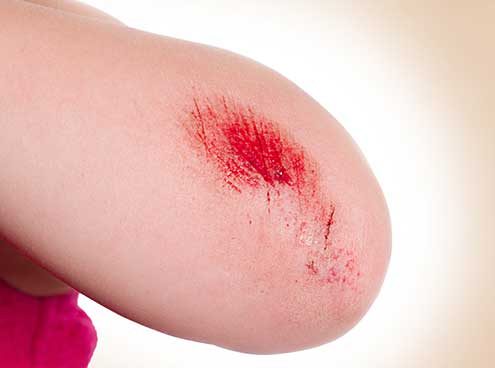
Wound healing, overview
Wound healingWound healing is a complex and dynamic process of restoring skin cellular structures and tissue layers that involves multiple components: differentiated cells , stem cells , hair follicles, extracellular matrix (ECM) proteins, cytokines networks, microRNAs , blood vessels, nerves and mechanical forces.
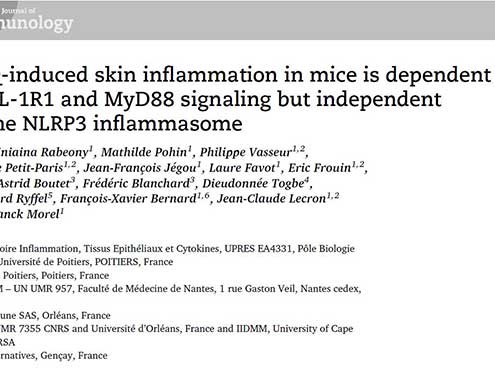
Imiquimod-induced skin inflammation in mice is dependent on IL-1R1 and MyD88 signaling but independent of the NLRP3 inflammasome
PsoriasisThe pathogenesis of inflammatory skin diseases such as psoriasis involves the release of numerous proinflammatory cytokines, including members of the IL-1 family. Here we report overexpression of IL-1α, IL-1β, and IL-1 receptor antagonist mRNA, associated to expression of IL-23p19, IL-17A, and IL-22 in skin cells
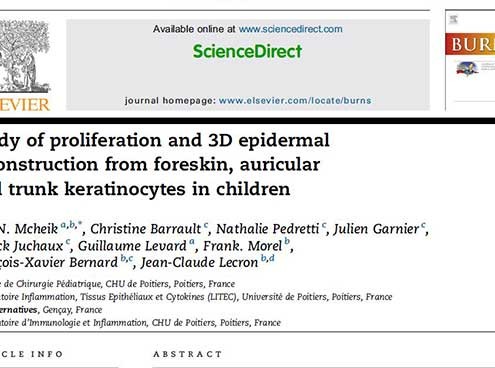
Study of proliferation and 3D epidermal reconstruction from foreskin, auricular and trunk keratinocytes in children
Wound healingOur studies highlight the potential of foreskin tissue for autograft applications in boys. A suitable alternative donor site for autologous cell transplantation in female paediatric burn patients remains an open question in our department. We tested the hypothesis that in vitro studies and RHE reconstructive capacities of cells from different body sites can be helpful to select an optimal site for keratinocyte isolation before considering graft protocols for girls.
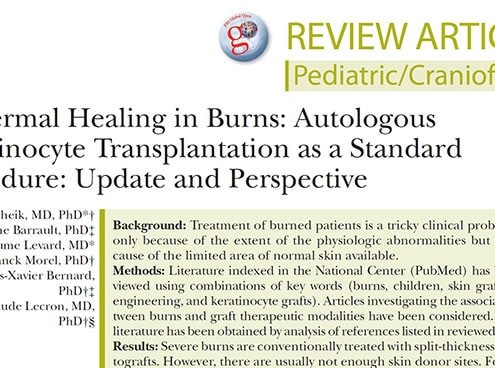
Epidermal healing in burns: autologous keratinocyte transplantation as a standard procedure: update and perspective
Wound healingIn the contexte of skin graft, cell suspensions transplanted directly to the wound is an attractive process, removing the need for attachment to a membrane before transfer and avoiding one potential source of inefficiency. Choosing an optimal donor site containing cells with high proliferative capacity is essential for graft success in burns.
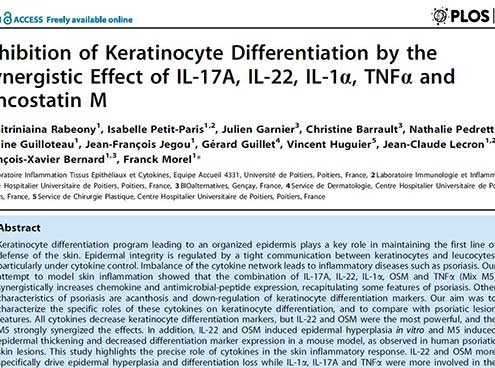
Inhibition of keratinocyte differentiation by the synergistic effect of IL-17A, IL-22, IL-1α, TNFα and oncostatin M
Inflammation, PsoriasisThis study highlights the precise role of cytokines in the skin inflammatory response (psoriasis). IL-22 and OSM more specifically drive epidermal hyperplasia and differentiation loss while IL-1α, IL-17A and TNFα were more involved in the activation of innate immunity.
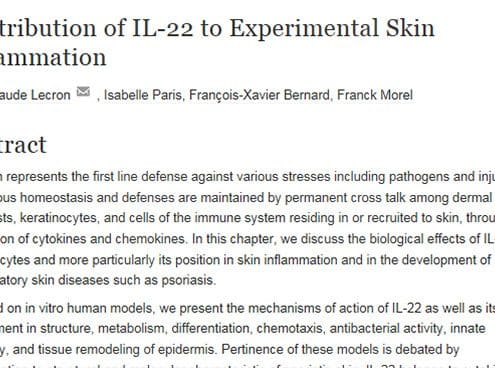
Contribution of IL22 to experimental skin inflammation
Inflammation, PsoriasisFocused on in vitro human models, we present the mechanisms of action of IL22 as well as its involvement in structure, metabolism, differentiation, chemotaxis, antibacterial activity, innate immunity, and tissue remodeling of epidermis.
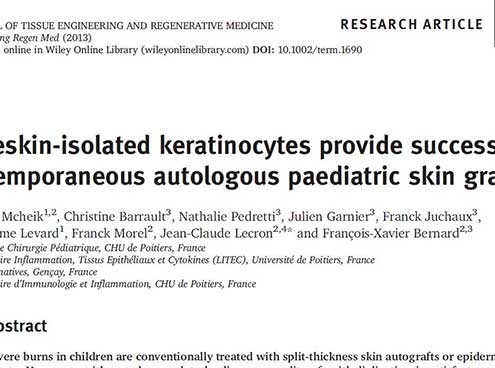
Foreskin-isolated keratinocytes provide successful extemporaneous autologous paediatric skin grafts
Wound healingWe report a successful method for grafting paediatric males presenting large severe burns through direct spreading of autologous foreskin keratinocytes. This alternative method is easy to implement, improves the quality of skin and minimizes associated donor site morbidity. in vitro studies have highlighted the potential of foreskin tissue for graft applications and could help in tissue selection with the prospect of grafting burns for girls.
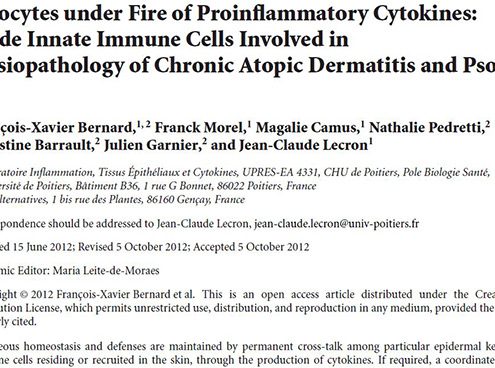
Keratinocytes under fire of proinflammatory cytokines: Bonafide innate immune cells involved in the physiopathology of chronic atopic dermatitis and psoriasis
Atopic dermatitis, Dermatite atopique, PsoriasisSpecific cytokine environment deregulation plays a central role on skin morphology and innate immunity, moving towards specific pathologies and opening the way to new therapeutic strategies.



